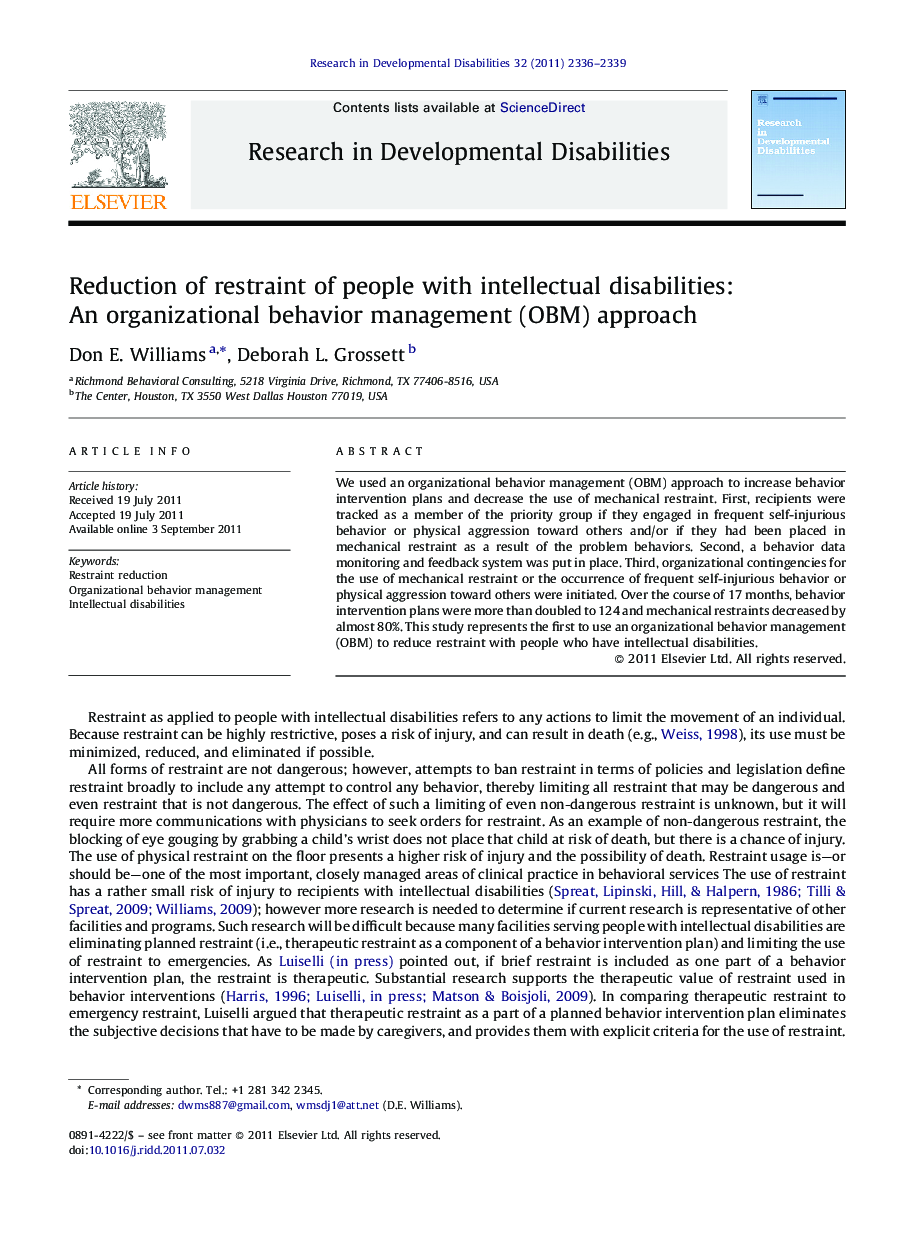| Article ID | Journal | Published Year | Pages | File Type |
|---|---|---|---|---|
| 371812 | Research in Developmental Disabilities | 2011 | 4 Pages |
We used an organizational behavior management (OBM) approach to increase behavior intervention plans and decrease the use of mechanical restraint. First, recipients were tracked as a member of the priority group if they engaged in frequent self-injurious behavior or physical aggression toward others and/or if they had been placed in mechanical restraint as a result of the problem behaviors. Second, a behavior data monitoring and feedback system was put in place. Third, organizational contingencies for the use of mechanical restraint or the occurrence of frequent self-injurious behavior or physical aggression toward others were initiated. Over the course of 17 months, behavior intervention plans were more than doubled to 124 and mechanical restraints decreased by almost 80%. This study represents the first to use an organizational behavior management (OBM) to reduce restraint with people who have intellectual disabilities.
► We used an organizational behavior management (OBM) approach to reduce mechanical restraints and to increase behavior intervention plans ► Mechanical restraints were reduced by almost 80% over 17 months ► Behavior intervention programs to reduce reliance on restraint were increased from 59 to 124 during the same period.
